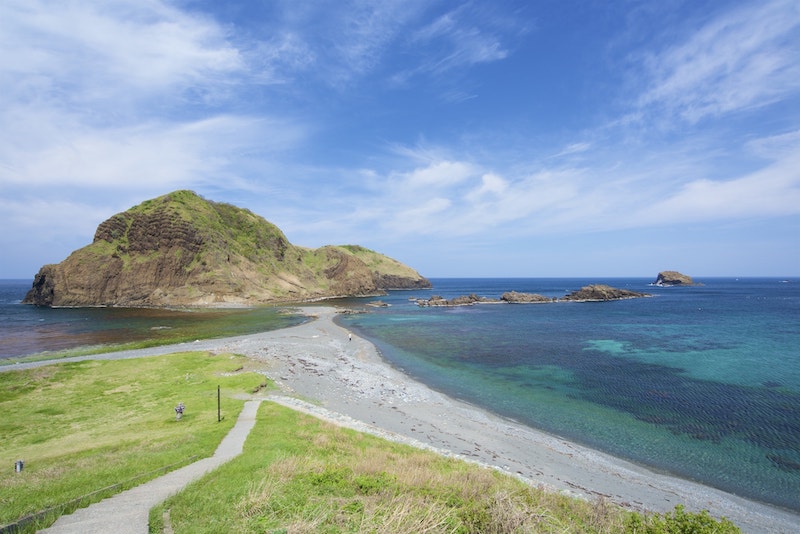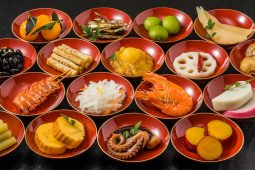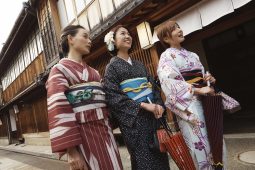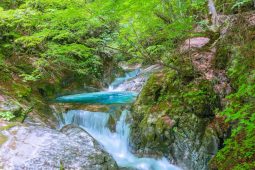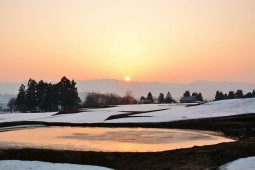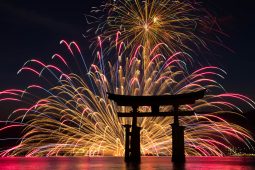Welcome back to another travel article, where I write about places practically in my neighbourhood and wonder why nobody’s gone there. This time, we have a slightly more orthodox pick than usual, but don’t worry, it’s still kind of obscure: Sado Island.
Sado is historically fairly well-known in Japan, though mostly for its gold mine (worthwhile mines of any kind being pretty rare in Japan) and by total coincidence, being a popular spot to exile people to for a while. Putting the part of me that loves history aside for a moment (because this is a nice article and history is misbehaving again), it since became famous for a couple more things. Danzaburou-Tanuki (one of the most famous tanuki in Japanese folklore) in the Edo period, and now, as a conservation spot for the Japanese crested ibis, which they’re doing better at than anybody expected.
It’s also about an hour from my house by boat — okay, okay, scratch that. This is a strange way to find out they canceled that route back in May. Pity. Still, there are two ferries in Niigata prefecture — both take your car as well if you want — and both of them get you there in under three hours (an hour and 40 for one of them). There’s a jetfoil if you don’t have a car but want to shave off an hour or so of travel time.
It took me many years to start liking Sado, and a lot of that is because I got extremely sick on boats as a child. Lucky for me, I’ve very much come around on the whole place since.
’Sado city’ is a very real city but also a bit of a term of convenience; it’s one quite large city (in area if not population) because having a couple on one island felt a bit silly to everyone.It’s an island with a lot to offer, and I’m going to try to go over some of that now. As is a bit of a tradition with my recommendations, none of it is going to cost you that much outside of standard lodging costs and the ferry (which — if you’re okay with not having fancy accommodations for an hour or two — will run you 2,400 yen for an adult or half that for a child). Once there, you can use your own car, rent one, rent a bicycle or motorbike, use the bus network, or get on a pre-arranged guided tour, as you like. I can’t vouch for the guided tour because I’ve never liked the idea of them, but it does seem like the best plan if you want safe results.
So, what is there to do in Sado? Short answer, yes. Long answer…
Honestly, the boat ride on the way is very pretty, there’s no reason not to start there. Once there, you can see lighthouses and beautiful cliffside views, waterside caves (or just caves on the water outright), all kinds of rock formations out in the sea, and so on. You can also take a few rowing trips on calmer waters through some very nice views, in Sado’s traditional fishing vessel, which… is basically a very large basin. There are all kinds of crafts you can sign up for, some breathtaking rocky coastlines to walk down, and past that…
Past that it really starts to show that I’ve lived in Japan for a long time, because I nearly forgot to mention the, oh, thirty-odd lakes, fields, temples, shrines, gardens, forests, and mountains that Sado has available, all of which are beautiful. Even as someone who’s far too used to being spoiled by this in Japan, I have to admit that finding so many incredible sights in just one city is not something you’re usually going to get even out of some fairly well-known tourist destinations.
Besides that, you also have the crested ibises to check in on, some nice beaches in the right season (winter is — I cannot stress this enough — the wrong season to get in the water), diving, pottery crafts (if you want to try your hand at it), and if you’re the indoor type or the weather turns against you, some nice museums and cafes.
It’s also the home of Kodo, probably the world’s biggest taiko drum band by quite a bit. I can’t exactly promise they’ll be in town, but you’ll see a lot of them and have no trouble getting your hands on some of their music. Please, please do that, or at least listen to some of it online. Trust me on this one.
Once you’re tired out from all that, you’ll probably want food. Sado doesn’t particularly advertise this, but a lot of its town areas are fairly traditional, which is a nice perk for the view you get while walking around. The food is good, and your specific options are basically what you get in any mildly touristic but not enormously urban area: Japanese food, ramen, Italian food (as interpreted through Japan), pick one.
For places to stay, Sado has a fair few options between hotels (which in this case means specifically western-style lodgings), and ryokan, the more traditional Japanese-style option. I’ve always gone for the latter (or minshuku, a less upscale version of ryokan). Like any area that gets tourists, try to go outside of the big holiday seasons for the best — and cheapest — experience, if you can manage that at all. Both usually come complete with onsen, or hot springs.
For things like ferry schedules, a more comprehensive list of what Sado has to offer, a huge amount of very nice pictures, and more, I am very happy to say that Sado is smarter about this kind of thing than my own city, and has made a really nice English version of its website available (found here: >https://www.visitsado.com/en/). Now that I’ve hopefully sold you on considering Sado, this can help you with the details of your trip: You’ll find the island has even more than I managed to fit in this article.


